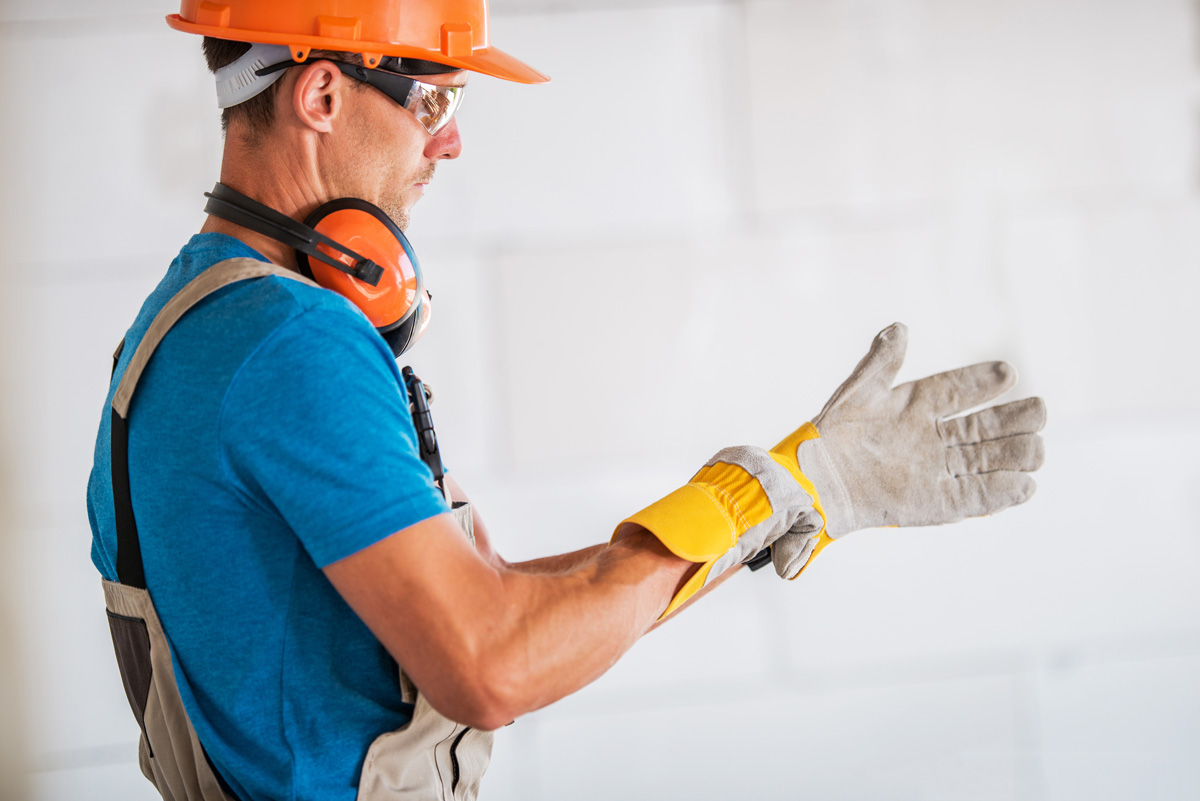
Construction Site Safety Begins With PPE.
Personal protective equipment, or “PPE,” is equipment worn to minimize exposure to hazards that can cause serious injuries. The typical construction worksite incorporates a wide range of activities including a number of potential safety hazards that require PPE every day. Simply stated, failing to use the prescribed equipment can put you in danger.
Here are the types of PPE common to the construction industry:
Hand Protection
Most gloves are designed for a specific hazard or task. General work gloves, such as leather gloves, are good for handling rough work or material but won’t protect against electrical shock.
Cut-resistant gloves are designed to protect hands against metal burrs or other cut hazards, but they’re not designed to provide protection against corrosive chemicals.
Knowing both the hazard you are guarding against and the type of protection required ensures you will properly protect your hands in all circumstances.
Eye and Face Protection
Eye and face PPE provides excellent protection when worn properly. Safety glasses must have side shields and the glasses themselves should be adjusted so they don’t slide down while you’re working.
Face shields provide protection for the whole face, where glasses only protect the eyes. They have adjustment ratchets on the headband that must be altered to the individual user’s head.
Head and Body Protection
Head protection is required in areas that have the danger of impact, falling or flying objects, and electrical shock and burn. In some instances, full-body protection is necessary to guard against all harmful agents. When this type of PPE is required, it must be worn whenever you’re in designated areas—even for short periods.
Foot Protection
Steel-toed safety shoes are often required on a construction site. When purchasing steel-toed safety shoes, make sure there’s a tag indicating that the shoe build is in accordance with the ANSI Z41 standard. This ensures the shoe is up to commercial-grade standards and that the metal toe will not collapse if struck.
Proper Use and Care of PPE
PPE is most effective when used as designed. For example, PPE will underperform if it’s not sized correctly and fitting properly. Take some time to make sure all of your PPE is the right fit.
Keeping your PPE properly maintained is also important. In fact, poorly maintained equipment can be a greater hazard: dirty glasses create visibility problems, chemical gloves with pinholes will allow chemicals to touch your skin, and shoes held together by tape will not protect your feet and will create trip hazards.
Additionally, never use any equipment that is broken or is not working properly. Damaged protective equipment provides no protection at all.
VTC Insurance Group is committed to making your workplace as safe as possible—and it begins with properly fitted and functioning PPE. To learn more, contact a VTC Insurance Group agent near you. Call 248.828.3377 or visit vtcins.com.
The above content is for informational purposes only and is not intended as medical or legal device.


